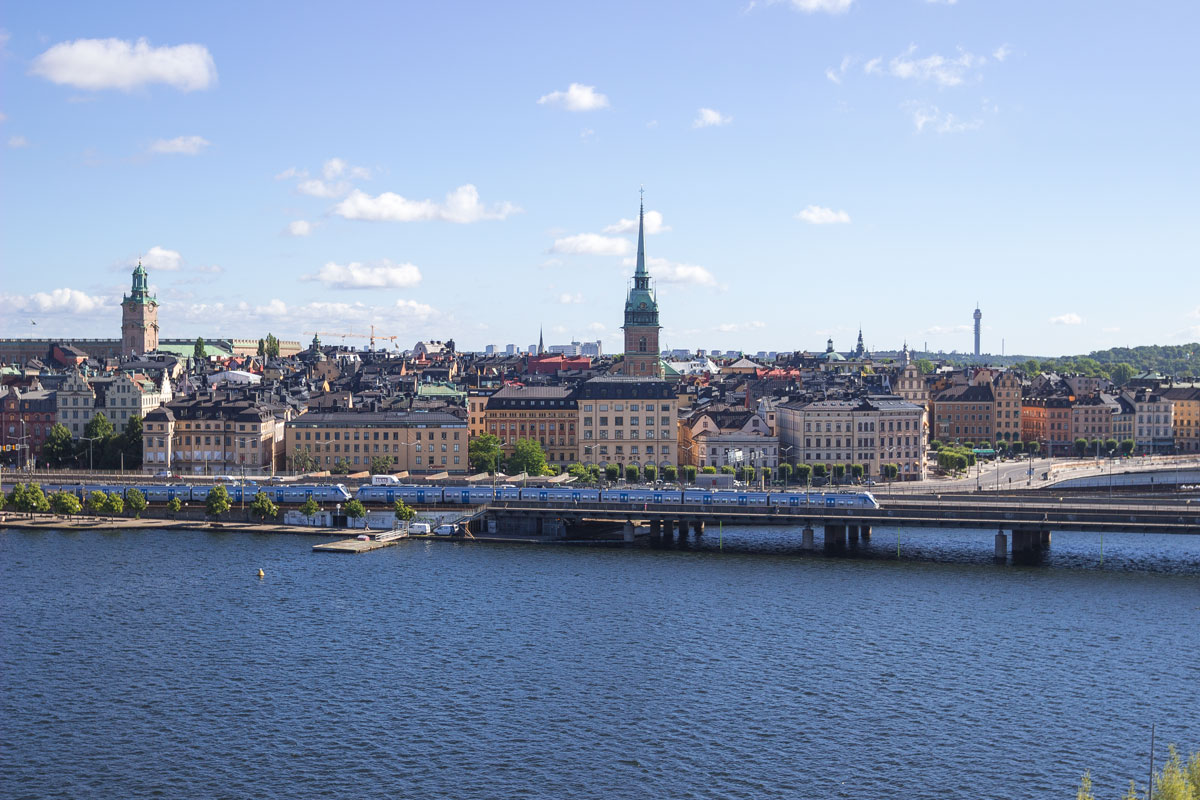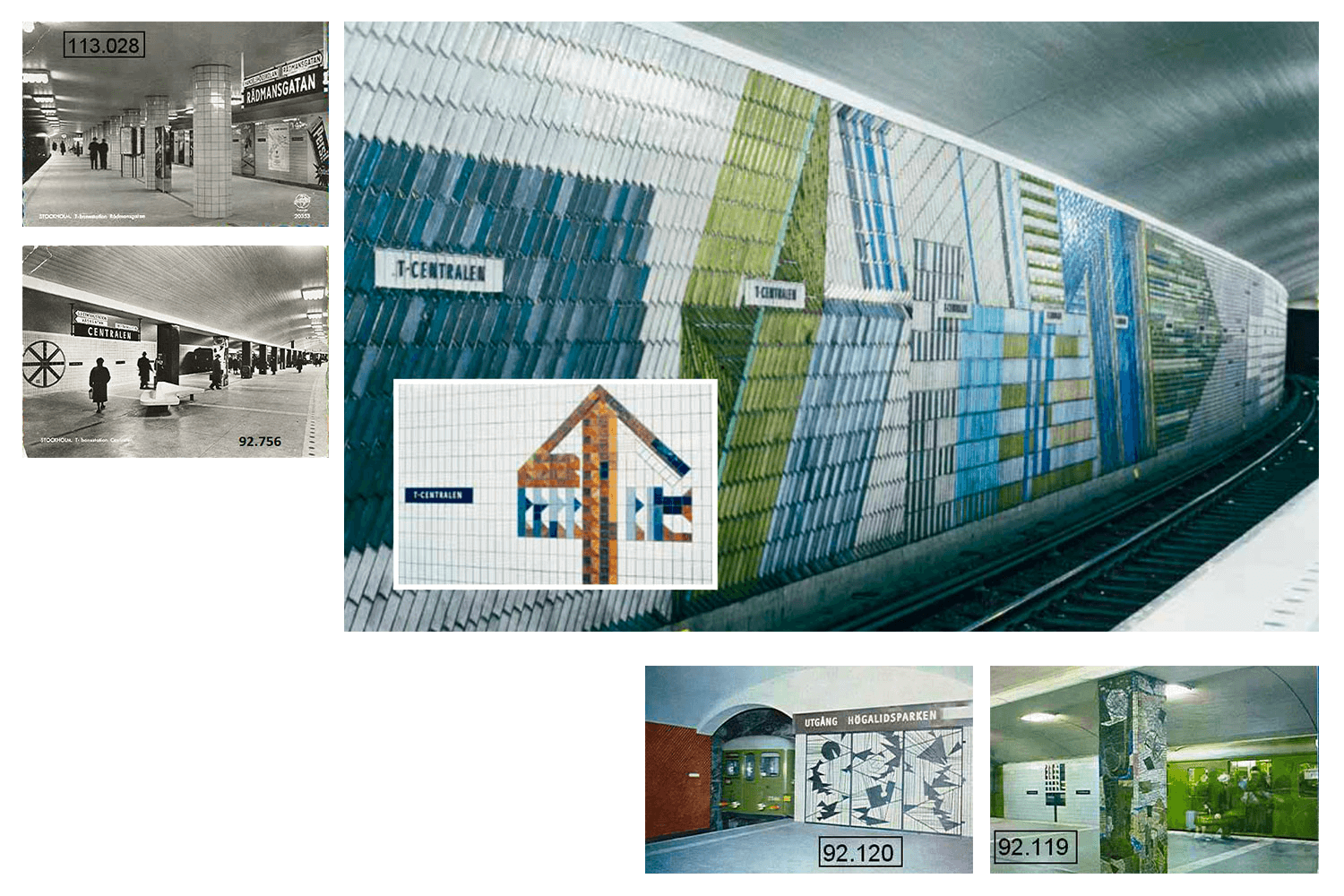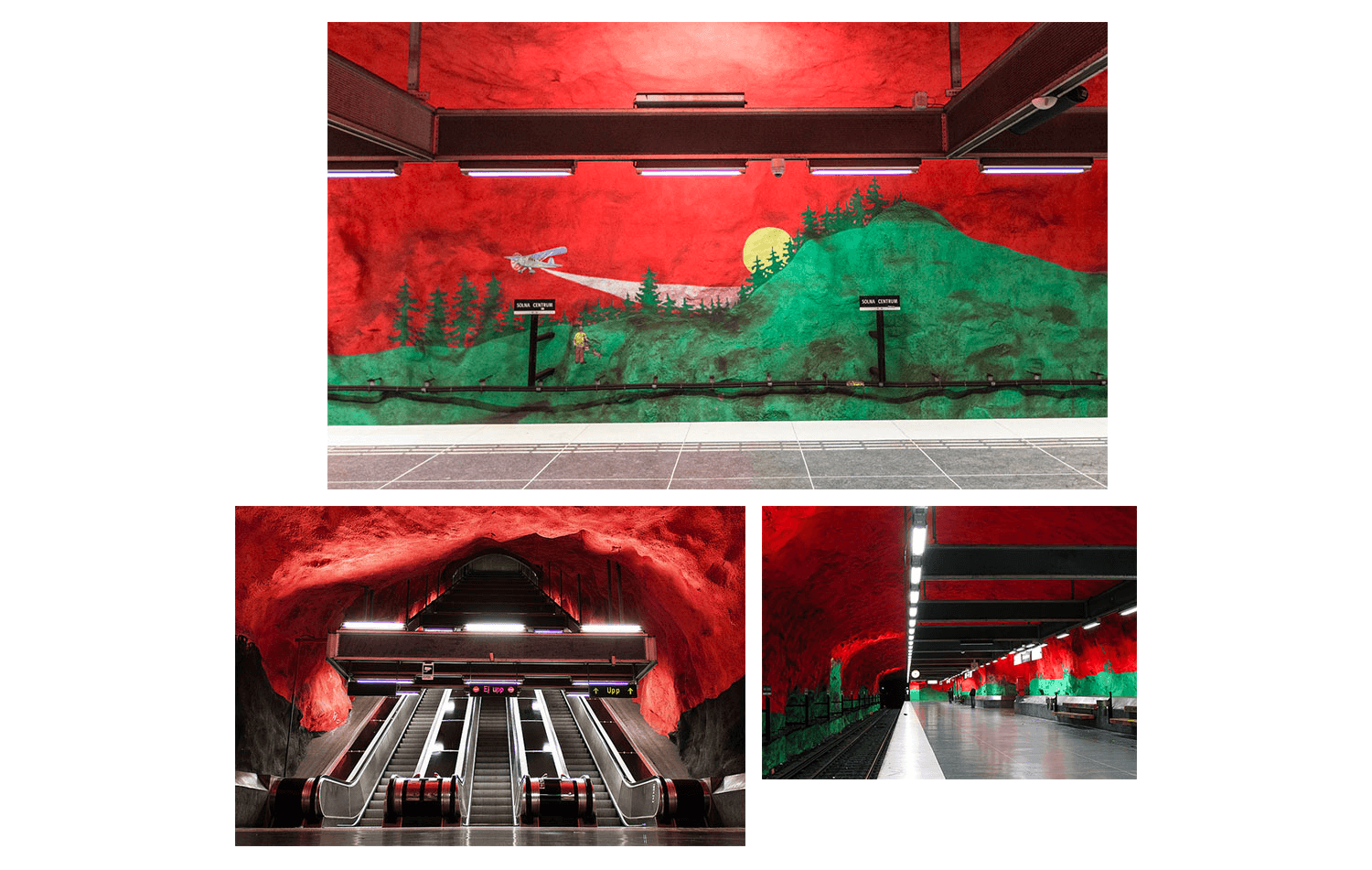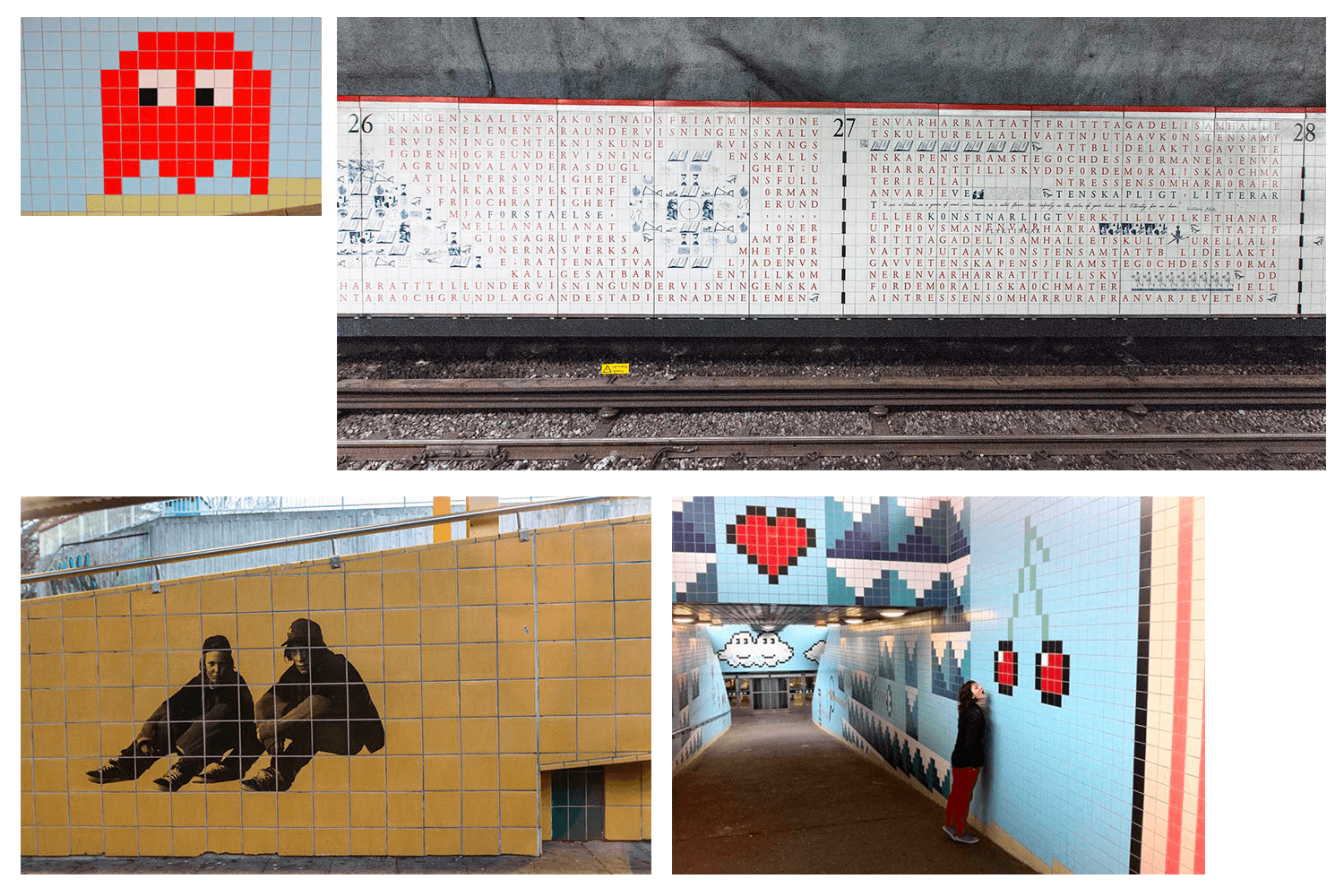Stockholm Metro
Stockholm has an absolutely beautiful metro. Collections of photos from there are constantly published on various entertainment websites, but almost always without any information, and often in a revealing manner. And it’s a shame.
Of course, Stockholm doesn’t have a deep history like the Moscow Metro. There are no underground bunkers-palaces here. Instead, the Swedish metro resembles IKEA. Most stations lightly reference political ideas of mid-20th century Sweden and offer modern, colorful designs, but that’s about it.
Perhaps it’s for the best. It’s hard to find a better transportation system in terms of “art versus convenience.”
⁂
The Stockholm metro was opened in 1950, although there was an underground tram system before that. Currently, the metro has three lines — blue, red, and green — each with a couple of branches. All the other clutter around them on the map represents suburban trains and trams.

The metro is extremely convenient. It doesn’t reach the outskirts of the city or the airport, but it works perfectly within Stockholm itself. You can get to almost any part of the city, and they managed to carefully extend a branch to the historical center without spoiling anything.

The idea of a metro in Sweden was conceived as early as the late 19th century, but it was decided to start construction only half a century later under the loud slogan of the Swedish social democrats: “A Home for the People.” In a broader sense, it symbolized the country as a whole, not an invitation to live in the metro. The slogan encompassed not only free healthcare and convenient transportation but also culture. Sweden believed that art should be accessible to everyone, at every step.
The first line was the green one, but it’s impossible to resist and not start the story with the blue line and its magnificent station, T-Centralen.


Platform.


Of course, the metro didn’t always look like this. The modern design of the stations started to emerge in the 1970s, before that, they were quite simple.

In contrast to the blue station on the same line, there are several stations executed in red and orange. The most famous among them is Rådhuset, which translates to “City Hall.”


Platform.

The sensation is that the metro is carved into the rock. Of course, that’s not the case. The stone texture is artificially created, and if you look at it up close, it turns out to be very dusty and unwashed. But who’s really looking?

Similar station, but brighter – Solna Centrum on the same line. The illustrations on the walls of the station are dedicated to issues of overpopulation and environmental pollution.

Kungsträdgården Station (Royal Garden).

The station has an interesting history and the most provocative design. When it was being constructed, a scandal erupted due to the historical park where they wanted to cut down old elm trees to build an exit from the station. Eventually, the exit was relocated, the trees were preserved, and the station was decorated in the style of baroque gardens belonging to a certain Swedish king.

The Stockholm metro is called the “longest art gallery in the world.” If that’s the case, then Kungsträdgården Station is the largest exhibition in this gallery.
The gas lanterns in the corners are genuine historical lanterns that once illuminated the streets of Stockholm. The columns, statues, artifacts — all taken from the National Art Gallery and city museums.


Suddenly, a train arrives at the gallery, and it’s time to catch another line.

Hötorget Station (Haymarket). One of the oldest stations in Stockholm, opened in 1952 on the green line.
Stockholmers refer to the station as the “bathroom.” There is no modern art — the design is simple and practical, almost unchanged since its opening. The columns and walls are covered in greenish tiles. Truly a bathroom. The largest and most incredible bathroom in the world.
The vending machine is perfect. The twisted lamps on the ceiling were added in 1998.


The red line, Stadium Station. Opened in 1973 in memory of the 1912 Olympic Games. A strange reason, but the station is impressive nonetheless.



These stations are a gentleman’s collection that any traveler in Stockholm should visit. Of course, there are others in the city. All of Stockholm’s metro is splendid, with each station uniquely designed.

Certainly, just like in Moscow, the coolest stations are in the center. On the outskirts, they are not as impressive. In general, the design mostly consists of a few interesting elements on the walls, such as samples of soil and cross-sections of the earth, like at the Technical University station.

Or like a mosaic of video games at the Thorildsplan station. Or like a tiled narrative of Carl Linnaeus’ journey at the University station. Or like Banksy-style graffiti at the Telefonplan station.

In the Stockholm metro, one can travel endlessly; the number of details is overwhelming. But most importantly, it is practically a perfect metro system. The only drawback is that the majority of platforms in Stockholm are of an island type. Only a couple of platforms are built along the shore.

On the other hand, Stockholm is never overcrowded like Moscow. In Moscow, during rush hours, people literally stand wall to wall due to poorly designed stations, but in Stockholm, such crowds do not exist, and there are no issues.

Everything is wonderful in the Kingdom of Sweden.


